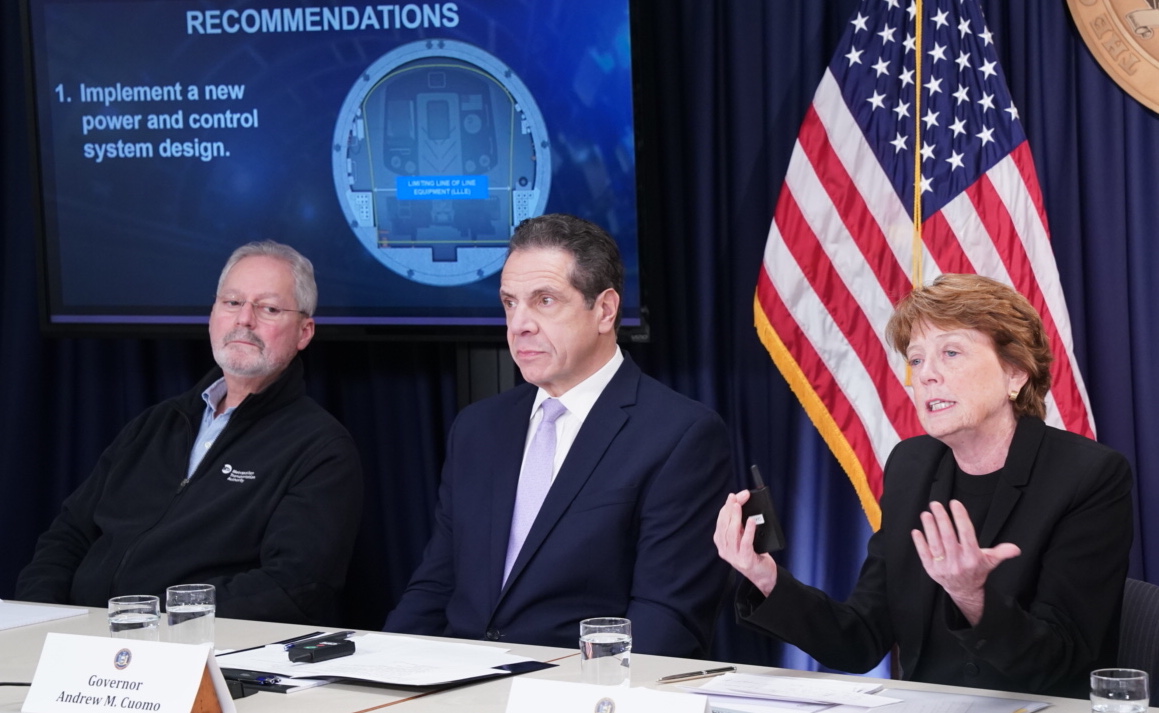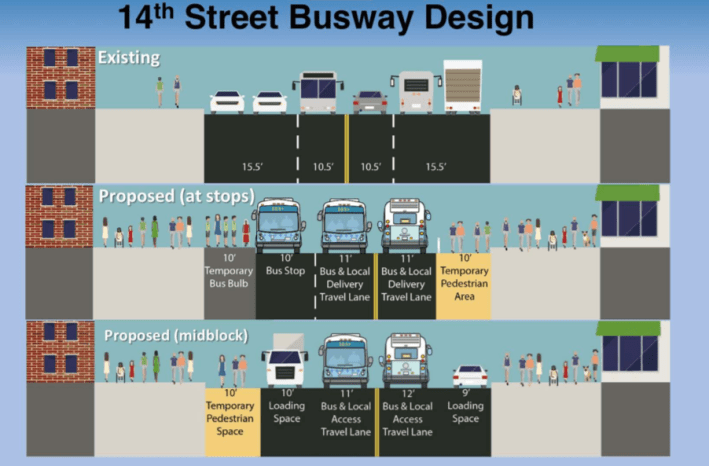Even before the city could fully digest Gov. Cuomo's kibosh of the L-train shutdown, a chorus of city officials began demanding the implementation of long-planned bike and transit improvements that would have mitigated the tunnel repairs.
Before Cuomo's hasty announcement on Thursday, city and state transportation officials had mapped out a network of busways, bike lanes, bike-share stations, and sidewalk extensions along the path of the now-canceled L train closure — most of which had the support of advocates and city council members in affected neighborhoods from Canarsie to the West Village.
"I don’t want to lose the investments in alternative transportation methods that would come out of the L train shutdown," said Manhattan Council Member Keith Powers, who represents the East Side of Manhattan.
The de Blasio administration has already installed the bulk of the bike lanes and busway intended to keep L riders moving during the shutdown. The city had also planned to reserve the Williamsburg Bridge for carpools and buses for most of the day, too. Now, all the fate of that work and plans are uncertain, as some car owners will deem it unnecessary for them to give up what they consider their space in the roadways.
Mayor de Blasio, who has shown strong commitment to Vision Zero safety improvements, but has done virtually nothing to restrict or regulate car commuting, said Thursday afternoon that the future of the street redesigns is shaky. "If it turns out that this really is a sea change, then we're going to evaluate what it means and if we're going to look at these things in another light," he said.
The alternative transportation options, developed by city DOT over three years of planning and public input, are plentiful: new bike lanes on Grand Street, Delancey Street, 12th Street, 13th Street and elsewhere; Citi Bike infill in Williamsburg and Manhattan, expansion into Bushwick, plus planned dedicated e-bikes for the bridge itself; bus lanes across Brooklyn and Manhattan; sidewalk expansions and a busway on 14th Street — and more.
Such improvements are desperately needed in a growing and increasingly traffic-congested city. Yet only the planned Citi Bike expansion remains certain at this point, according to DOT.
"It’s important to get people out of cars, and to get them to use mass transportation," said Powers, who released a statement after Cuomo's announcement calling on the MTA to stick to its plans for Select Bus Service on 14th Street — including the busway. "Our buses are one of the best ways to get around in Manhattan — especially when the L train is crowded in the morning."
A number of his colleagues in elective office agree.
"Whether or not the tunnel will be open, it’s a known fact that ridership along the L corridor will increase," Brooklyn Council Member Rafael Espinal (and Public Advocate candidate) told Streetsblog. "The city should move forward with their plan to provide alternative transportation to New Yorkers along the L-train corridor."
In a statement, Brooklyn Council Member Antonio Reynoso — who had touted the shutdown as an opportunity to revolution transit and transportation in his district — argued that the mitigation plans "have applications beyond the shutdown and should still be implemented."
Across the river, State Senator Brad Hoylman tweeted that "upgrades to subway, pedestrian and bus infrastructure" should continue as planned. And East Village Council Member Carlina Rivera released a statement urging the city to "stay the course... until the public and advocates are able to process and comment on [the governor's] new plan."
Cycling and transit advocates, meanwhile, lamented their three years spent advocating for bike, pedestrian and transit priority — changes, they said, that are still essential to mitigate the impacts of 15 to 20 months of nighttime and weekend service work, expected to reduce train arrivals to every fifteen minutes.
"Fifteen minute service on weekends is a huge capacity cut," said Philip Leff, the co-chair of Transportation Alternatives' North Brooklyn committee. "The so-called experts that got up on stage today and said that this is not going to be a disruption are out of their element."
Cuomo's announcement certainly stunned the city, both for the apparent speed with which he made it and for the way it blindsided MTA officials, who have spent three years saying that it was imperative to close the Canarsie Tunnel for urgent post-Sandy repairs. After Cuomo briefly toured the tunnel last month, his hand-picked team of engineering academics determined that the MTA could forego replacing the tunnel altogether and instead opt for spot improvements that will only require nighttime and weekend service changes.
It is unclear if those engineers are correct.







